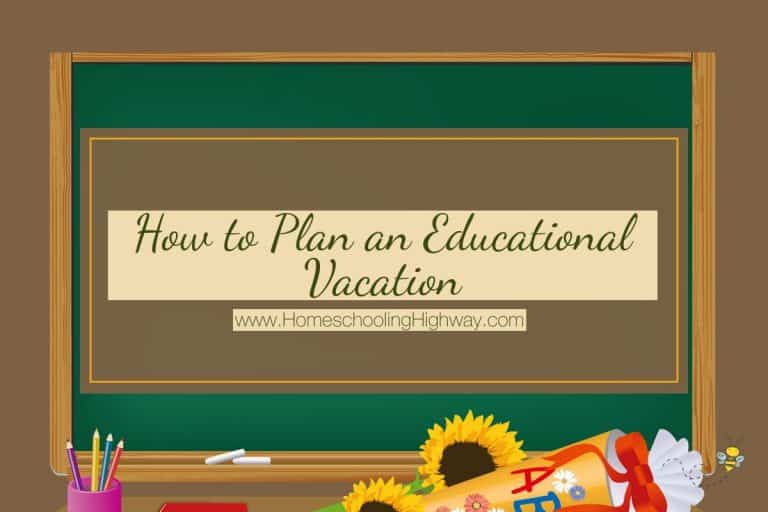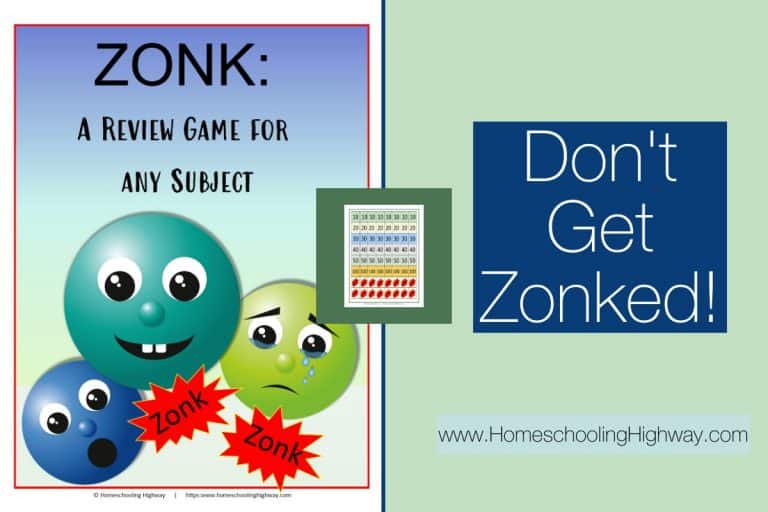
Welcome back to our Blogging Through the Alphabet series! I’m glad to have you.
Last week, we looked at a big list of Homeschool Advantages, this week we’ll look at the Basics of Homeschooling and what that looks like from a mom’s perspective.
So are you ready? Let’s get started!
This post may contain affiliate links. You won’t pay more but I may get a small commission which, these days, helps put gas in the truck. Thank you so much!
Homeschooling Basics #1:
Do you really want to homeschool?
Answering this question is not one to be taken lightly. Yes, there are plenty of advantages to homeschooling, but you must understand that it is a commitment.
If you want your child to succeed in his/her education and then later in life, you have to be willing to put aside your own personal goals and concentrate on the needs of your child.
Not only is homeschooling an unselfish time-commitment, but it requires you to spend the majority of your day with your children. Do you give a big sigh of relief when the kids leave the house, or would you rather that they didn’t go away?
What is your child’s personality towards you as their parent? Your kids have to be able to follow your directions and obey you in order to get done their assignments. You have to be able to trust them, and they have to respect you. You would be the mom, teacher, and the principal of your school, home, and family. Sometimes it can be tough.
Homeschooling Basics #2:
Understand Your State’s Homeschooling Laws
Homeschooling laws in every state are different. This can be good or bad, depending on where you live. Whatever state you live in, you still need to know the laws and obey them in order to be in good standing with the state.
A good place to start your research is by searching “your state name” + “homeschool laws”. Most likely, HSLDA.org‘s site will come up first in the ranking, with your state’s name with it. HomeSchool Legal Defense Association (HSLDA) is an excellent resource to give you up-to-date state law information.
HSLDA has broken down the laws into easy-to-understand language and explains exactly what you need to do to homeschool legally.
The following items are things you should keep a look out for.
Some states require more of the following items than other states do. In fact, some states have very few requirements. So, don’t be afraid of the following items, just realize there is a possibility that you’ll have to think about some of these things.

Compulsory Attendance Ages for Homeschooling
What is the compulsory attendance age of the child? Meaning, how old does your child have to be before you have to start being “legal”. I’ve seen a variety of ages, 5-8.
State Required Paperwork Before Starting to Homeschool
- Is there a Notice of Intent form that needs filled out and sent to the Board of Education?
- How early does the Notice of Intent have to be received by the Board of Ed before you can begin homeschooling?
- How often will you have to fill out this form and send it in?
- Do all “teachers” have to be listed? (grandparents, online instructors, aunts/uncles, friends, tutors, music instructors, sports coach)
- Is an educational plan required before the school year starts? Some states require you to list out your text/workbooks, any other educational materials, and/or assessment plan for each subject.
- Does the paperwork need to be notarized?
Homeschool Teacher Qualifications
- Do you need to have a high school diploma?
- Do you need to be certified as a teacher?
- Do you need to be supervised periodically by a certified teacher?
- Do you need to be “deemed sufficiently qualified to teach” by the state’s Board of Education?
- Do you need to complete a course for home-based education?
Required Homeschool Subjects
- Usually the general subjects are math, science, social studies, language arts
- Additionally, I have seen more specific subjects required like spelling, occupational education, art appreciation, music appreciation, economics, government, U.S. Constitution, health, communication skills, citizenship, physical education, CPR, good behavior, your state’s history, and safety education.
Immunization Records
In some states a copy of your child’s immunization record or medical/religious exemption letter must be kept and made available if the county superintendent would ask for it.
Homeschool Oversight Options
Each state gives a different amount of oversight options to choose from. A few are:
- Homeschooling under a church school’s name
- Homeschool under a private school under their extension program
- Homeschool as a home-based private school
- Homeschool using a private school satellite program
- Homeschool via private tutor
Homeschool Attendance and Hours/Day Requirements
- Some states require a certain number of school days per year or a minimum amount of hours/year. These daily and hourly totals could be different in each state depending on the grade of the child, with the younger children not having as many days and hours required.
- Does your state require a minimum amount of school hours each day?
- Does your state specify a required time during each day that your child needs to be doing school in? For example, from 9am to 3pm?
Homeschool Testing Requirements
- Does your state require any testing?
- Is testing required every year or only after certain grades?
- Do you get to choose the test from a list or is it already chosen for you?
- A list of tests to choose from may include:
- Standardized Achievement Tests
- Iowa Test of Basic Skills
- California Achievement Test
- Comprehensive Testing Program Test
- Measures of Academic Progress Test
- Metropolitan Achievement Test
- Peabody Achievement Individual Test
- Terra Nova
- Woodcock Achievement Test
- Wechsler Achievement Individual Test III
- Comprehensive Test of Basic Skills
- Personalized Achievement Summary System Test
- or another state education approved test.
- Instead of testing, is there any requirements for an annual assessment by a certified teacher or child psychologist?
Homeschooling High School Requirements
- Does the state require high school credits for their subjects?
- How many credits do you need for each subject category?
Homeschooling Portfolio Requirements
- Some states require all test results and evaluations to be kept.
- Sometimes schoolwork samples should be saved.
- Some states require quarterly report cards to be given to the Board of Education.
Homeschooling Basics #3:
Write out Your Purpose
Ok, so you’ve decided that you want to homeschool your kids, and the state requirements are doable. The next thing I would encourage you to do is to think about your “why”.
There are a few reasons why you should get this figured out.
- Know your end goals
- To remind yourself of the reason why you’re homeschooling when it gets a little tough
- To answer other people’s question about why you’re homeschooling
If you are having trouble thinking about your reasons, take a look at my post on Homeschooling Advantages. It may help you.
My homeschooling purpose is: To provide my children a thorough, individualized, one-on-one Christian education, in a positive, loving, and safe environment, without the threat of peer pressure and negative influence; training them now on how to live in an ungodly and sinful world as adults.
Of course, I don’t rattle this off to people that ask me why I homeschool, (I would give them a simplified version) rather, when I fill out my oversight’s paperwork every year, I place this in the section for their why question.
Homeschooling Basics #4:
Selecting Your Curriculum
Now here is where the fun begins. If you haven’t figured it out yet, there is a TON of homeschooling curriculum that you can choose from.
From big name publishers to small homeschool bloggers, you can find curriculum on any topic, grade level, and price range.
In order to choose the best curriculum for you and your child, you should consider these tips.
1. Identify the required subjects for your state
2. Identify your personal required subjects as the principal/parent of your school
3. Identify the type of teaching assistance that you will need for each subject
My post on How to Choose the Perfect Homeschool Curriculum with Confidence goes into each of the above suggestions in greater detail.
If you like to have all of your curriculum, resources, tips, and information in one place check out what SchoolhouseTeachers.com has to offer in my post: Everything You Need to Homeschool Successfully with SchoolhouseTeachers.com.
4. Identify your homeschooling method
To read more about each homeschool method just click the title. Homeschool Tips that Start with the Letter M
5. Identify your child’s learning style
Is your child a visual, auditory, and/or kinesthetic learner?
6. Read homeschool curriculum reviews
A great place to start reading curriculum reviews is in my Homeschool Curriculum Review Round-up post.
This post features each subject category and will direct you to in-depth reviews of different curriculum for that particular subject. Each review will give you plenty of details and even pictures from inside the curriculum, course, or software.
7. Identify if you need to write your own curriculum
If you are interested in learning how to create your own unit study, then my Homeschool Tips that Start with the Letter U post will lead you step by step, plus show you how I created my unit study using the fifty U.S. state quarters. Homeschool Tips – U. How to Create Your Own Unit Study
Homeschooling Basics #5:
Scheduling Your Day/Month/Quarter/Year
Scheduling is my favorite part.
Start with a Yearly Overview
To begin with, start with a yearly calendar. Cross out the days that you won’t be able to count as school days. This could be holidays and/or holiday breaks, seasonal breaks, birthdays or anniversaries, vacations, life events like weddings, babies, moves, etc.
Make sure you know any requirements for total number of school days or school hours required.
Decide when you want your first day of “school” to be and begin counting your days. Don’t count the ones you have crossed off. When you get to your number of days required, see where your last day will be. If you are ok with that date then just write it down. If you feel like the school year would be too long, then you’ll have to go back and adjust your start date or adjust some of the days off during your school year.
Look at the Semesters
Once you have your school year’s start and end dates, figure out your quarter/semester dates. This will help you in making goals and figuring out how much schoolwork should be done by these dates.
Look at Each Quarter
Take each of your curriculum books and find the total number of units, chapters, or pages. On your calendar in pencil, write where you should be in each book by the end of the quarter. Give yourself some leeway in case an emergency comes up or you or your child gets sick.
If you get to the end of the quarter and you have passed your goal, then great, you’re ahead. If you’re behind, then you need to either double up, or readjust your goals or curriculum, depending on the reason why your behind.
Weekly Set-up
Once you get your quarterly goals figured out, you can think about your weekly set-up. Do you have to do a lesson in that subject five days/week? Is it flexible curriculum where you only do this subject twice a week? Which days are you going to do what subjects and for how long?
Daily Plans
When you have the general idea of how you think each week should be, you can think about each day. I would suggest not working too far ahead on your daily plans. It’s just too easy to schedule too much and then you get discouraged when you get behind on your plans.
Give yourself some “white space” on your calendar each day to either catch up, clean up, or crash. You’ll be amazed at how this extra space fills up each day.
Megan from My Full Heart has a great post on how she began scheduling her two middle-school age children with checklists. I’d encourage you to take a look.
Homeschooling Basics #6:
Keeping Your Records Organized
Names and Dates Are So Important and Helpful
I would highly recommend teaching your kids early to write their name and date on each of their papers. This helps so much in case they don’t put their papers away. As much as you stress that they need to put stuff away, sometimes it just doesn’t get done. Hey, I know….I’ve been there.
Keep Things Labeled
Try to make it easy for your kids to be able to place their work away, either in folders or binders. Have them label their binders, folders, spiral notebooks, etc. with their name and subject title.
Think Digital Too
If they do a lot of work on the computer, then helping them set up digital folders would be to their advantage and yours.
Keep a Teacher’s Binder or Planner
As far as your teacher binder, you’ll want to have a section for your calendars and plans, each child’s list of subject names, textbook information and publisher information.
You’ll want your answer keys easily available and a section of blank paper for notes and ideas.
You should also keep any requirements from your oversight like report cards and their due dates or important papers to fill in through the year pertaining to testing requirements or paperwork required by the Board of Education.
You may also want a page for each child and subject for recording grades and scores. Make sure you date everything, this helps when and if you need to recount your days of school or keep attendance, etc.
Smart Mama Planner
If you really want to have your life in control, I would suggest taking a look at SchoolhouseTeachers.com’s Smart Mama Planner. For the coming school year, the planner is 111 pages long, some of which you print extra copies depending on how many children you have.
This planner gives you:
- present and future calendars
- planning pages
- budgeting pages
- assignment/due date sheets
- annual planning sheets
- goal sheets
- objectives
- reading logs
- preschool planning/activity sheets
- attendance trackers
- transcript sheets
- chore charts
- prayer journaling pages
- devotional coloring pages

The planner can be printed or used digitally, and it is yours automatically with a subscription to SchoolhouseTeachers.com.
If you would prefer to purchase the planner without the subscription, you can of course, do that too. Smart Mama Planner
Homeschooling Basics #7:
Keeping Your Sanity
Schedule in Your Own Personal Time
Please, please, please, schedule your own personal time.
Know Your Own Limits
Homeschooling is a gift that you give to your kids. It’s a gift of you, so you need to recharge yourself. Know your limits.
Personally, I knew that by 3pm everyday I mentally and emotionally was finished. I would start to get stressed about all the things around the house that I hadn’t been working on, supper had to be ready, etc. It’s very easy to take stress out on your kids.
So when it was three o’clock if we were done everything on my list, or not, we stopped. We just picked up from where we left off the next day.
Get Help
I would tell them that I helped them all day, now they had to help me. Cleaning, laundry, food prep, we all worked together on it. It was a big relief to me, knowing I had helpers, my to-do list was getting done, and they were learning other skills during this time as well.
Have Some Fun
When we got done, we all had our free time to do what we wanted. Each person is different. Maybe you need to move around and get some exercise, maybe you need to sleep, read a book or work on a craft or talent that you have.
Give yourself this time, even if it’s only a little bit, to recharge and reenergize. You will thank yourself for it, and so will your family.
Last Week’s Blogging Through the Alphabet A Posts
If you missed any of last week’s posts here’s the list. There are some great ideas, tips, information and resources!
Megan from My Full Heart: A is for Arena
Laura from Laura McKinney Adams: How to Teach the Alphabet
Jennifer from A Piece of Mind: Moving Adventure
Kristen from A Mom’s Quest to Teach: A is for Arlington National Cemetery
Dawn from The Schoolin’ Swag Blog: Letter A Preschool Activities and Printable
Kristi from Bailey’s Home School Adventure: A is for Auditory Processing Disorder
Homeschooling Highway: Homeschool Advantages, Active Shooter Situation: Teach Your Kids What to do, Homeschool Tips the Letter A, Are You Afraid? Sword Drill and Bible Lesson
This Week’s “B” Posts
Keep an eye on Megan’s site as more homeschool bloggers add their posts to the link-up. You don’t want to miss them.











A wonderful look at how you can evaluate your journey to homeschooling. These are all important things to consider not only when you start out but when you are in the midst of those homeschooling years.
Kristen, That’s very true. Thank you for commenting!
This is a very thorough post on the basics of homeschooling – I love it. I think you’ve covered everything! Luckily we live in state with very relaxed homeschooling laws.
Thank you, Megan. Thanks for commenting.